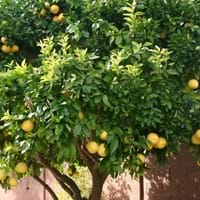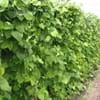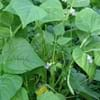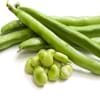Life Span
Biennial and Perennial
Perennial
Origin
Europe, Western Asia
South Asia, Southeast Asia
Types
Not Available
Not Available
Habitat
waste ground, wastelands
Mediterranean region
USDA Hardiness Zone
4-9
8-10
AHS Heat Zone
7-1
Not Available
Sunset Zone
A1, A2, A3, H1, H2, 1a, 1b, 2a, 2b, 3a, 3b, 4, 5, 6, 7, 8, 9, 10, 11, 12, 13, 14, 15, 16, 17, 18, 19, 20, 21, 22, 23, 24
Not Available
Habit
Rosette/Stemless
Spreading
Flower Color
Yellow
White
Flower Color Modifier
Bicolor
Bicolor
Fruit Color
Brown, Black
Green, Lemon yellow, Yellow
Leaf Color in Spring
Green
Green
Leaf Color in Summer
Green
Green
Leaf Color in Fall
Green
Dark Green
Leaf Color in Winter
Not Available
Dark Green
Plant Season
Summer
All year
Sunlight
Full Sun
Full Sun
Growth Rate
Medium
Medium
The pH of Soil
Neutral
Acidic
Soil Drainage
Well drained
Well drained
Bloom Time
Summer
Spring, Summer
Tolerances
Drought
Full Sun
Where to Plant?
Ground, Pot
Container, Ground
How to Plant?
Seedlings
Divison, Seedlings
Plant Maintenance
Medium
High
Watering Requirements
Average Water Needs, Do Not over Water, Keep the ground moist but not water-logged
Reduce watering once fruit are growing, Water daily during growing season
In Summer
Lots of watering
Lots of watering
In Spring
Moderate
Moderate
In Winter
Average Water
Average Water
Soil Drainage Capacity
Well drained
Well drained
Sun Exposure
Full Sun
Full Sun
Pruning
Remove damaged leaves, Remove dead branches, Remove dead leaves
Prune to control growth, Remove dead branches
Fertilizers
All-Purpose Liquid Fertilizer
Fertilize in early to mid-summer, for fruiting plants, use high phosphorous content fertilizer
Pests and Diseases
Aphids, Armyworm, Cutworms, Downy mildew, Pitch canker, Red blotch
Aphids, Citrus foot rot, Citrus gummosis, Citrus leaf miner, Red blotch
Plant Tolerance
Drought
Full Sun
Flower Petal Number
Not Available
Double, Semi-Double
Fragrant Bark/Stem
Yes
No
Foliage Texture
Fine
Coarse
Foliage Sheen
Matte
Glossy
Attracts
Butterflies
Ants, Birds
Allergy
Stomach burn
Anaphylaxis, Cough, Nausea, Rhinitis, Stomach pain, Swelling, Urticaria, Vomiting, wheezing
Aesthetic Uses
Not Used For Aesthetic Purpose
Farmland, Showy Purposes
Beauty Benefits
Blood purifying, Good for skin
Acne, Good for skin, Good for the Scalp, Improve skin tone, Moisturizing, Strong, beautiful hair
Environmental Uses
Air purification
Food for animals, Very little waste
Medicinal Uses
Aphrodisiac
anti-cancer, constipation, Digestive, Gastrointestinal disorders, Gout, Immunity, Jaundice, Respiratory Disorders, Rheumatoid arthritis, scurvy, Ulcers, Urinary problems, Weight loss
Part of Plant Used
Root
Fruits
Other Uses
Food for animals, Used as a nutritious food item
Cosmetics, Used as a flavouring in food, Used As Food, Used for its medicinal properties
Used As Indoor Plant
Yes
No
Used As Outdoor Plant
Yes
Yes
Garden Design
Edible, Herb, Vegetable
Edible, Fruit Tree, Tropical
Botanical Name
PASTINACA sativa
Citrus limetta
Common Name
Parsnip
sweet lime, sweet lemon, sweet limetta
In German
Pastinake
süße Limone
In French
Panais
Citrus limetta
In Spanish
Chirivía
limetta dulce, limón dulce mediterráneo, limón dulce y lima dulce
In Greek
Είδος δαυκίου
γλυκό ασβέστη
In Portuguese
cherivia
doce de limão
In Polish
Pasternak
słodkie limonki
In Latin
parsnip
dulcis ad cinerem
Phylum
Magnoliophyta
Magnoliophyta
Class
Magnoliopsida
Magnoliopsida
Clade
Angiosperms, Asterids, Eudicots
Not Available
Tribe
Not Available
Citreae
Subfamily
Not Available
Citroideae
Number of Species
Not Available
Season and Care of Parsnip and Sweet Lime
Season and care of Parsnip and Sweet Lime is important to know. While considering everything about Parsnip and Sweet Lime Care, growing season is an essential factor. Parsnip season is Summer and Sweet Lime season is Summer. The type of soil for Parsnip is Loam and for Sweet Lime is Rich while the PH of soil for Parsnip is Neutral and for Sweet Lime is Acidic.
Parsnip and Sweet Lime Physical Information
Parsnip and Sweet Lime physical information is very important for comparison. Parsnip height is 15.20 cm and width 7.60 cm whereas Sweet Lime height is 800.00 cm and width 600.00 cm. The color specification of Parsnip and Sweet Lime are as follows:
Parsnip flower color: Yellow
Parsnip leaf color: Green
Sweet Lime flower color: White
- Sweet Lime leaf color: Green
Care of Parsnip and Sweet Lime
Care of Parsnip and Sweet Lime include pruning, fertilizers, watering etc. Parsnip pruning is done Remove damaged leaves, Remove dead branches and Remove dead leaves and Sweet Lime pruning is done Prune to control growth and Remove dead branches. In summer Parsnip needs Lots of watering and in winter, it needs Average Water. Whereas, in summer Sweet Lime needs Lots of watering and in winter, it needs Average Water.





